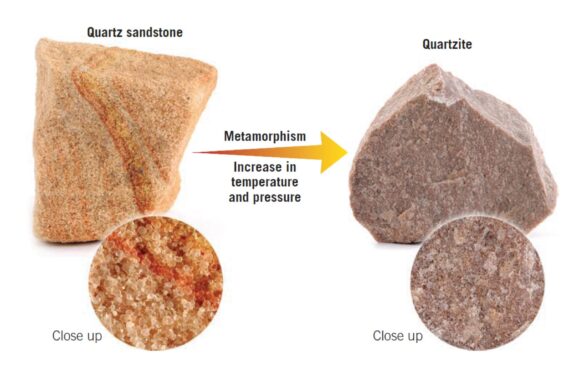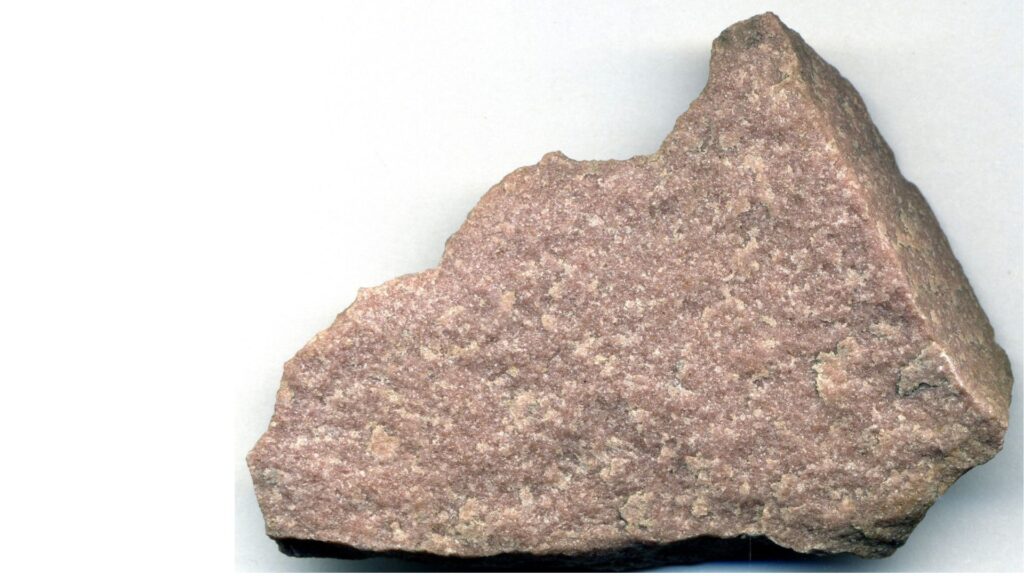From Quartz Sandstone to Quartzite

Unraveling the Metamorphic Evolution of Quartz Sandstone to Quartzite
In the intricate world of geology, transformations occur over vast spans of time, often unnoticed by the casual observer. One such remarkable transformation unfolds as quartz sandstone evolves into the mesmerizing mineral wonder known as quartzite. This article embarks on a journey to explore the geological processes behind this transformation, shedding light on the key factors and intricate stages that shape quartz sandstone into the exquisite and durable quartzite. Join us as we delve deep into the heart of Earth’s geological history, unveiling the secrets of this remarkable metamorphic journey.
The Formation of Quartz Sandstone: A Precursor to Transformation
Quartz sandstone, a sedimentary rock, is a creation of time and pressure. Comprising primarily of quartz grains, this rock forms in environments rich in sediment deposition, like beaches, deserts, and riverbeds. The deposition of sand grains over millennia forms layers, and as the layers accumulate, pressure compacts them, eventually cementing the grains together to create the characteristic texture of quartz sandstone. The initial stages of our journey lead us through the accumulation and consolidation of sedimentary materials.

Burial and Compaction
As sediment accumulates, it experiences increasing pressure from the overlying layers. This pressure compacts the sediment, forcing out air and water while pushing the grains closer together. The compaction of quartz grains marks the beginning of the transformational journey from quartz sandstone to quartzite.
The Alchemy of Heat and Pressure
Heat-Induced Metamorphism
As the Earth’s dynamic forces push the layers of sandstone deeper into the crust, heat becomes a crucial catalyst for transformation. This stage, known as metamorphism, is where the magic truly begins. The intense heat from the Earth’s interior starts to alter the mineral composition and crystalline structure of the sandstone.
The Dance of Minerals: Recrystallization Unveiled
Recrystallization and the Birth of Quartzite
Recrystallization, a central theme of metamorphism, involves the rearrangement of mineral crystals under heat and pressure. During this process, the quartz grains in the sandstone recrystallize, fusing together and forming a solid, interlocking mass. This intricate mesh of crystals is what gives quartzite its unparalleled hardness and durability.

Tectonic Uplift and Exhumation
Millions of years pass as tectonic forces continue to shape the Earth’s crust. Eventually, the once-buried quartzite-bearing rocks are uplifted due to the movement of tectonic plates. As the rocks rise closer to the surface, erosion works its magic, gradually exposing the hidden beauty of quartzite.
Conclusion: The Timeless Beauty and Resilience of Quartzite
The journey from quartz sandstone to quartzite is a testament to the Earth’s intricate processes and the passage of time. Through the forces of pressure, heat, and time, quartz sandstone undergoes a remarkable transformation, emerging as quartzite—a stone prized for its beauty, durability, and rich geological history. As we marvel at the spectrum of colors, the intricate patterns, and the unyielding strength of quartzite, let us remember that every piece of this remarkable stone carries within it a story of geological wonder that spans millions of years.
